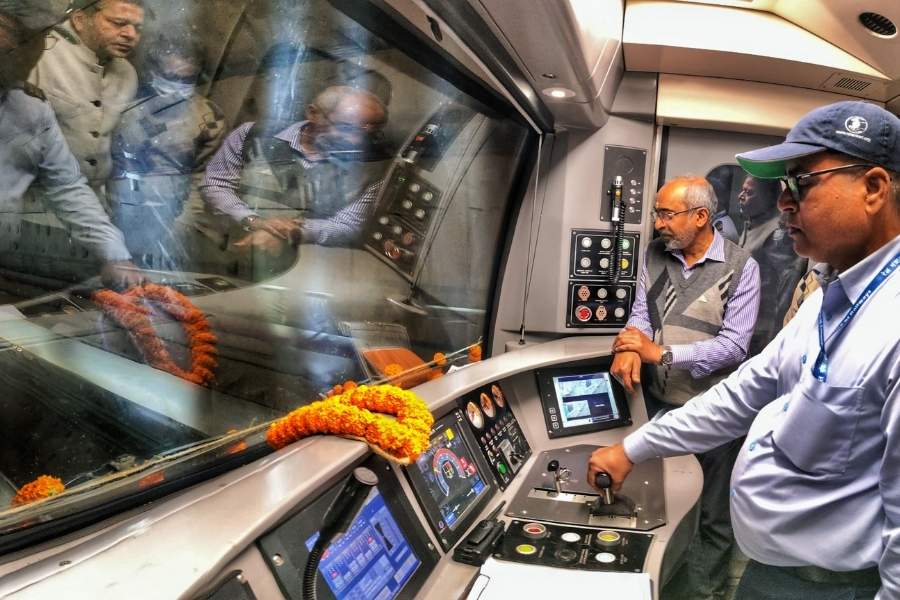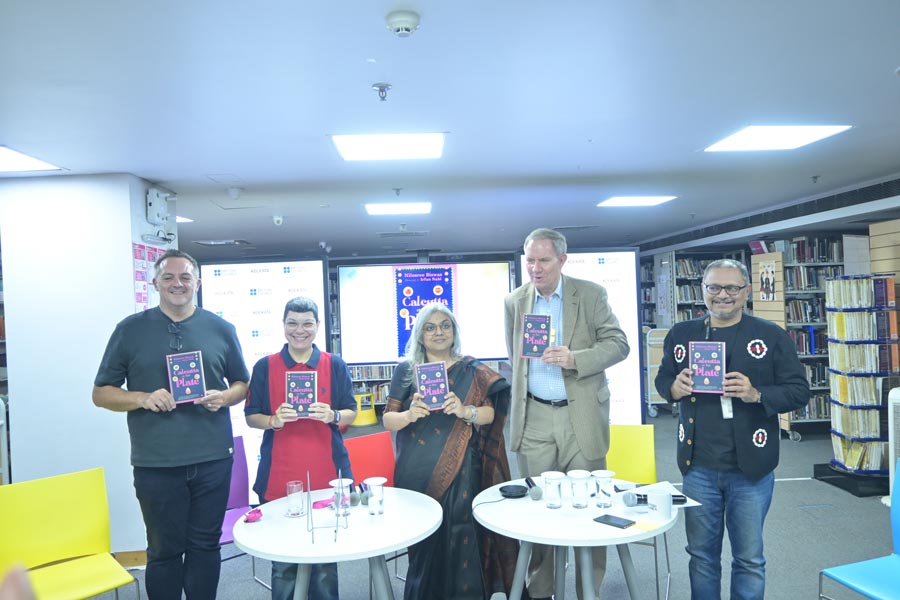
(L-R): Shaun Kenworthy, Rukshana Kapadia, Nilosree Biswas, Nick Low and Debanjan Chakrabarti at Camac Street’s British Council Library on July 21. They were joined by Tathagata Neogi via video call to discuss Biswas’s latest book, ‘Calcutta on Your Plate’ (published by Rupa Publications), which documents the relationship between food and history in the City of Joy. “In Kolkata, we talk about lunch at breakfast and about dinner at lunch. It’s a city that’s obsessed with food,” opened Chakrabarti, director of British Council, East and Northeast India, who moderated the evening’s conversation
Amit Pramanik
“My last two works had focused on Kashmir and Varanasi, respectively. People kept asking me when I was going to write about Kolkata, the city of my origin. Eventually, when I chose to write about Kolkata, I opted to look at the city’s food history in a different way. What is the food Bengalis eat and why?” asked Biswas, who is also a documentary filmmaker and splits her time between Mumbai and Philadelphia. “All of us have some fascination for food. For me, my relationship with food really began during my escapades in the ’80s as a student at South Point,” added Biswas, who has partnered with long-term collaborator, Irfan Nabi, for the book, with Nabi responsible for the sumptuous photographs.
Amit Pramanik
“When the Europeans came to Kolkata, along with the Britishers and the East India Company, they wanted something to eat that would suit their palate. One of the things they loved was Khichuri, since it went well with the climate. A lot of British women also learnt to cook curries, first in Chennai (then Madras) and then in Kolkata (then Calcutta), mostly from the housestaff that was working for them,” explained Biswas, who is a big fan of the hole-in-the-wall eateries around the city, for “the smaller the place is, the more interesting is the food”.
Amit Pramanik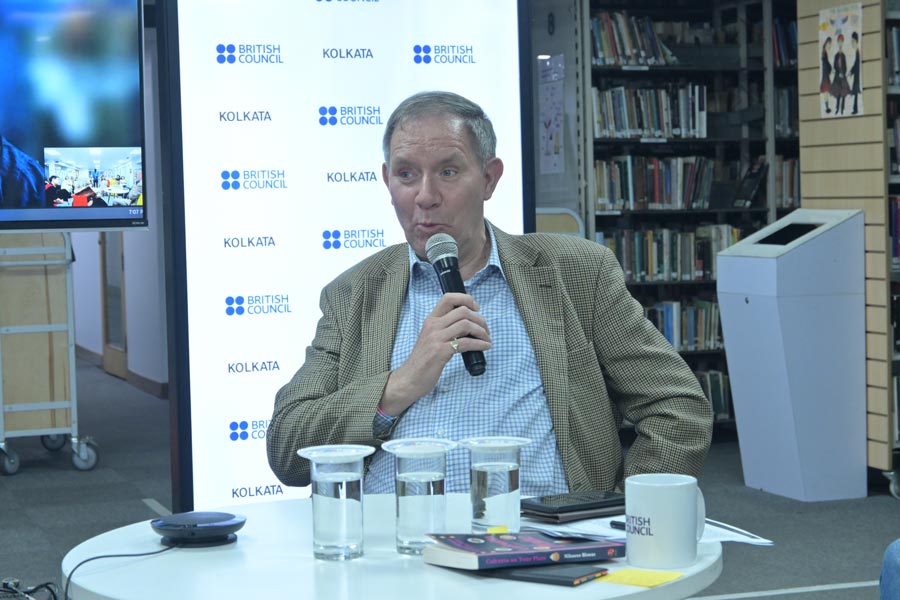
“Between 2010 and 2014, I spent four years in Bangladesh, where I mostly had bland, insipid meals, because they assumed I can’t tolerate spicy food. I’m relieved to say that I haven’t had a single bland meal in Kolkata yet,” shared Low, the British deputy high commissioner in Kolkata, who has nurtured a life-long love for mishti doi, or what he calls, “dessert cocaine”. “Previously, in the UK, you wouldn’t get authentic Indian food. Most so-called Indian restaurants were actually Bangladeshi restaurants. But now, thanks to the likes of Asma Khan and Anjan Chatterjee, there’s real Indian and Bengali food becoming available in London,” said Low
Amit Pramanik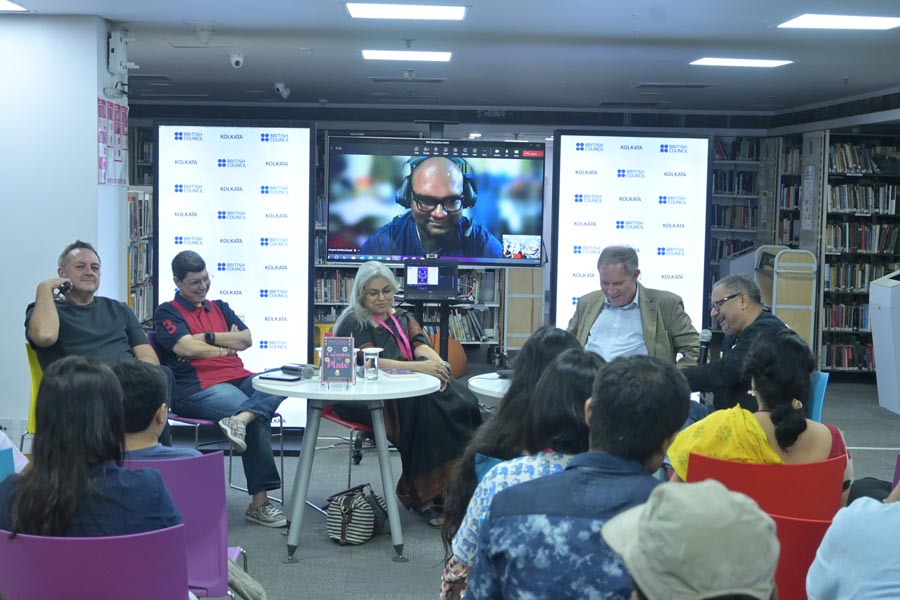
“I love exploring street food in Kolkata, because that’s the one place where a lot of influences come together. I’d take eating around the streets of New Market over a fancy meal in a restaurant any day,” admitted Neogi, archaeologist, cultural historian and co-founder of city-based Immersive Trails, who could not make it to the event in person due to a last-minute foot injury. Neogi, whose pet dog is called Kochuri(!), had learnt to cook Indian dishes during his student days in the UK and opined how “South Asian food has started a reverse colonisation process of moulding British tastes”. Neogi also gave the audience his ranking of the top three biryani places in Kolkata, with Shiraz at the top, India in second place and Aminia in third
Amit Pramanik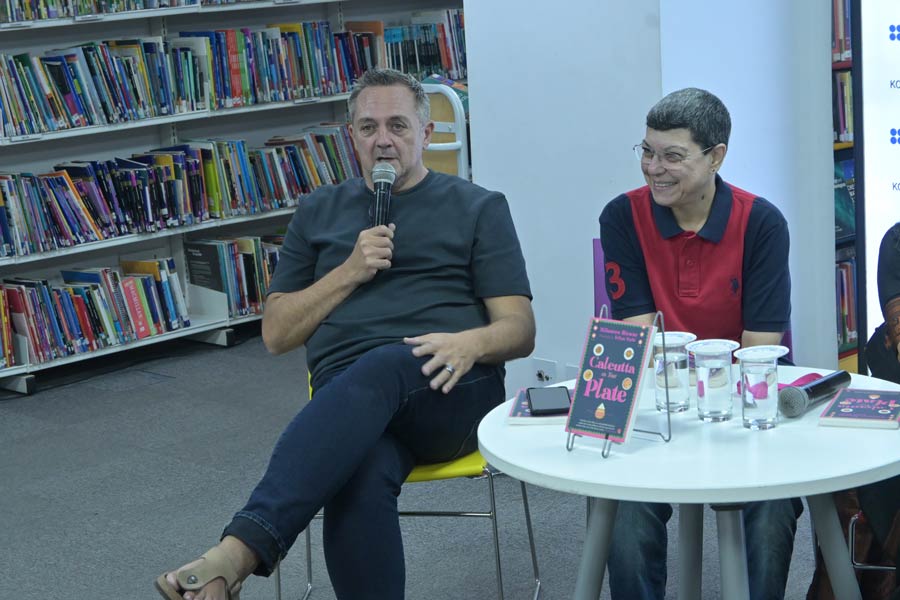
“Kolkata has been my home for almost 23 years now. What has been most intriguing for me during my time in the city has been discovering the various stories about Kolkata’s past, especially from the colonial period during which Kolkata was arguably the food and beverage capital of Asia. It was the place everyone used to come to party,” narrated Kenworthy, who spent four years as executive chef at The Park, before continuing his journey as one of Kolkata’s most beloved chefs and restaurateurs. Shedding light on why British cuisine often faces a lot of flak, Kenworthy, who grew up in Manchester and worked in London, said: “We had rationing in the UK from the time of World War I till about 1951-52. That meant a couple of generations didn’t learn to cook and the craft had briefly disappeared. Even though my grandmother was a great cook, my mother didn’t pick up those traditions in the kitchen”
Amit Pramanik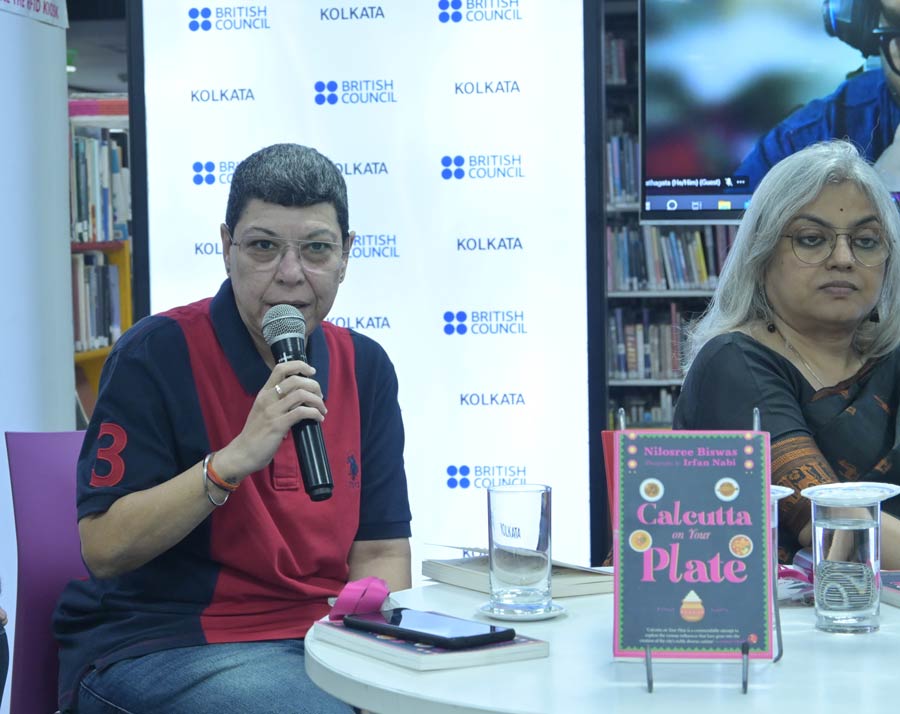
“The story of food in Kolkata is the story of Kolkata, for it is the story of love. Food is a basic need, but it is also something that nourishes the soul and the mind. I come from a Parsi family that’s been in the business of feeding this city for 75 years. The more I know about food, the more I want to know,” said Kapadia, food blogger and co-founder of Ammolite Ideators F&B. Shifting the lens to Kolkata’s cosmopolitan food culture, Kapadia asked: “What is Bengali food exactly? Kosha Mangsho, Chilli Chicken and singara are all considered Bengali food, but how many of them actually came from Bengal? The singara, for instance, came from Persia, but no Bengali adda is ever complete without it”
Amit Pramanik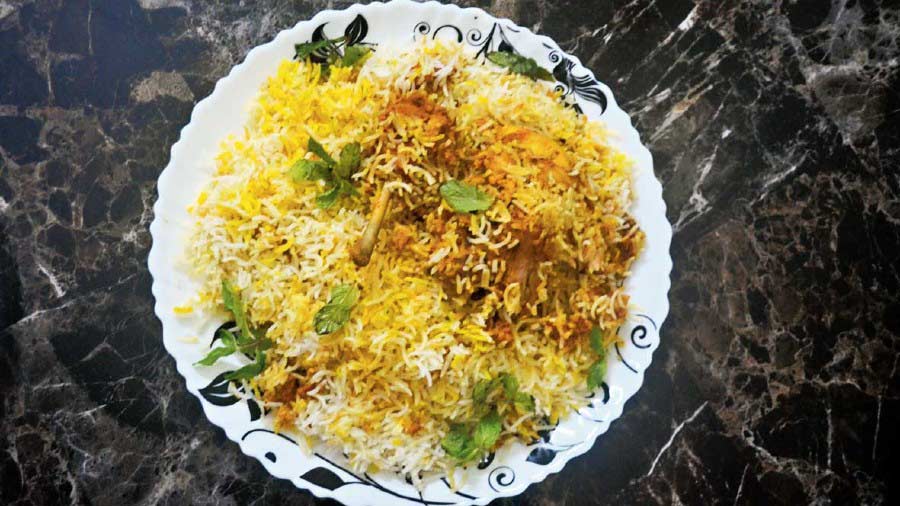
The evening culminated with a question-answer session with the audience followed by the panellists listing their favourite Kolkata dishes. Among the honourable mentions were — Kakori Kebab and biryani from India, the Chicken Bharta at Russel Punjabi Dhaba, Flurys’ Chocolate Boat, the Egg Aloo Roll at Nizam’s, the Mutton Samosa at Nahoum & Sons, the Fish Finger from Calcutta Cricket and Football Club (CCFC), among other scrumptious Kolkata delicacies
TT Archives